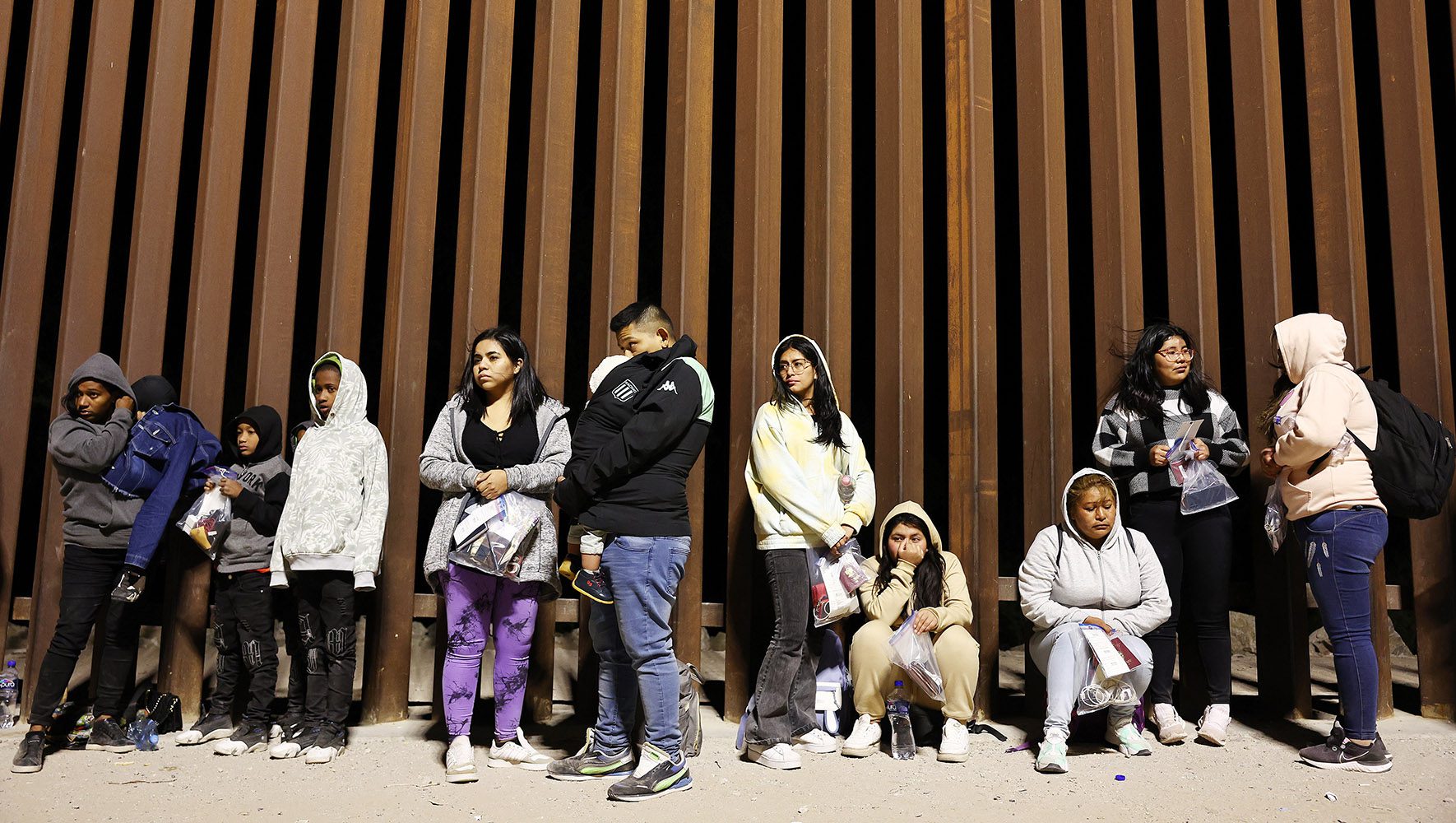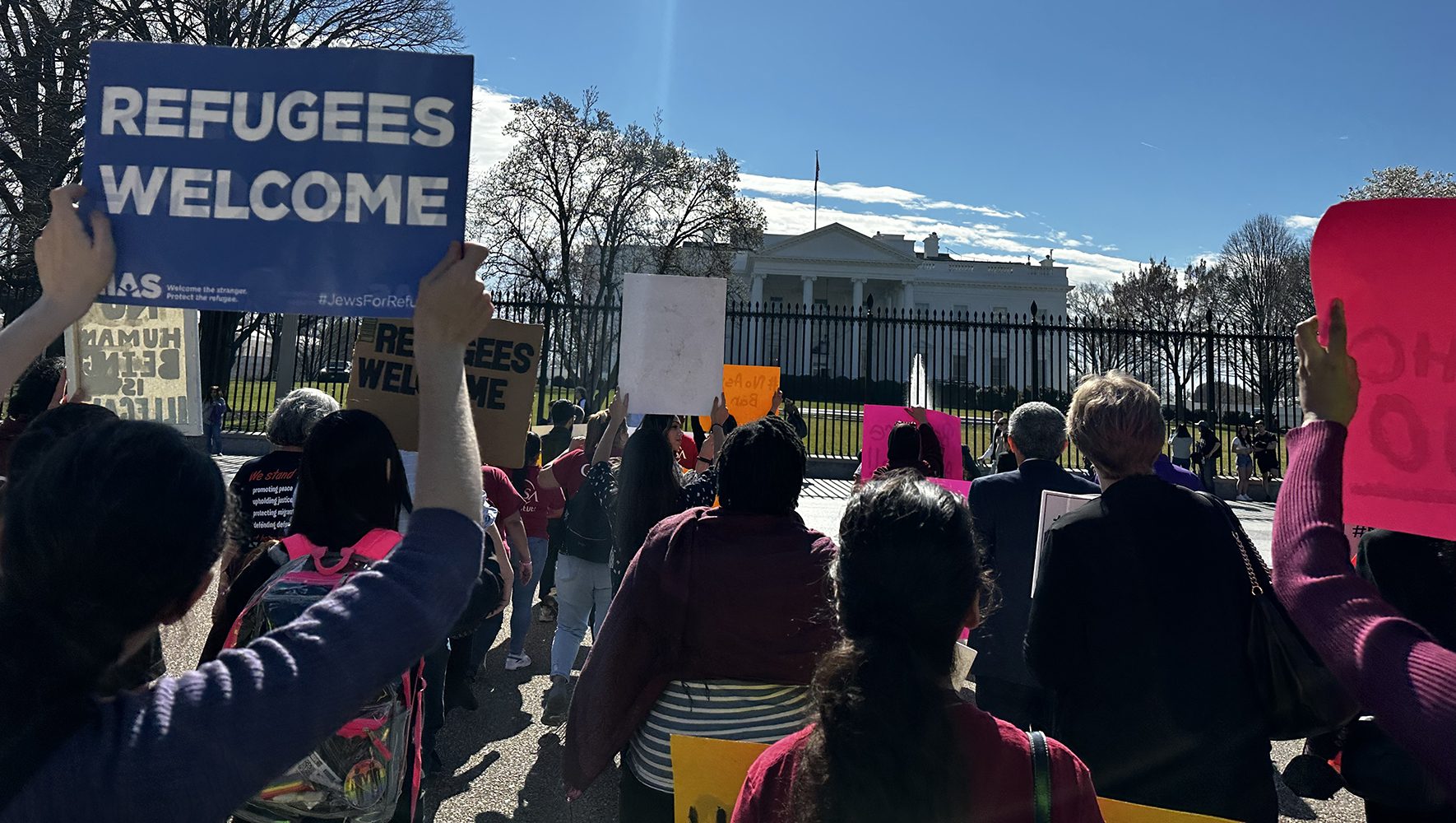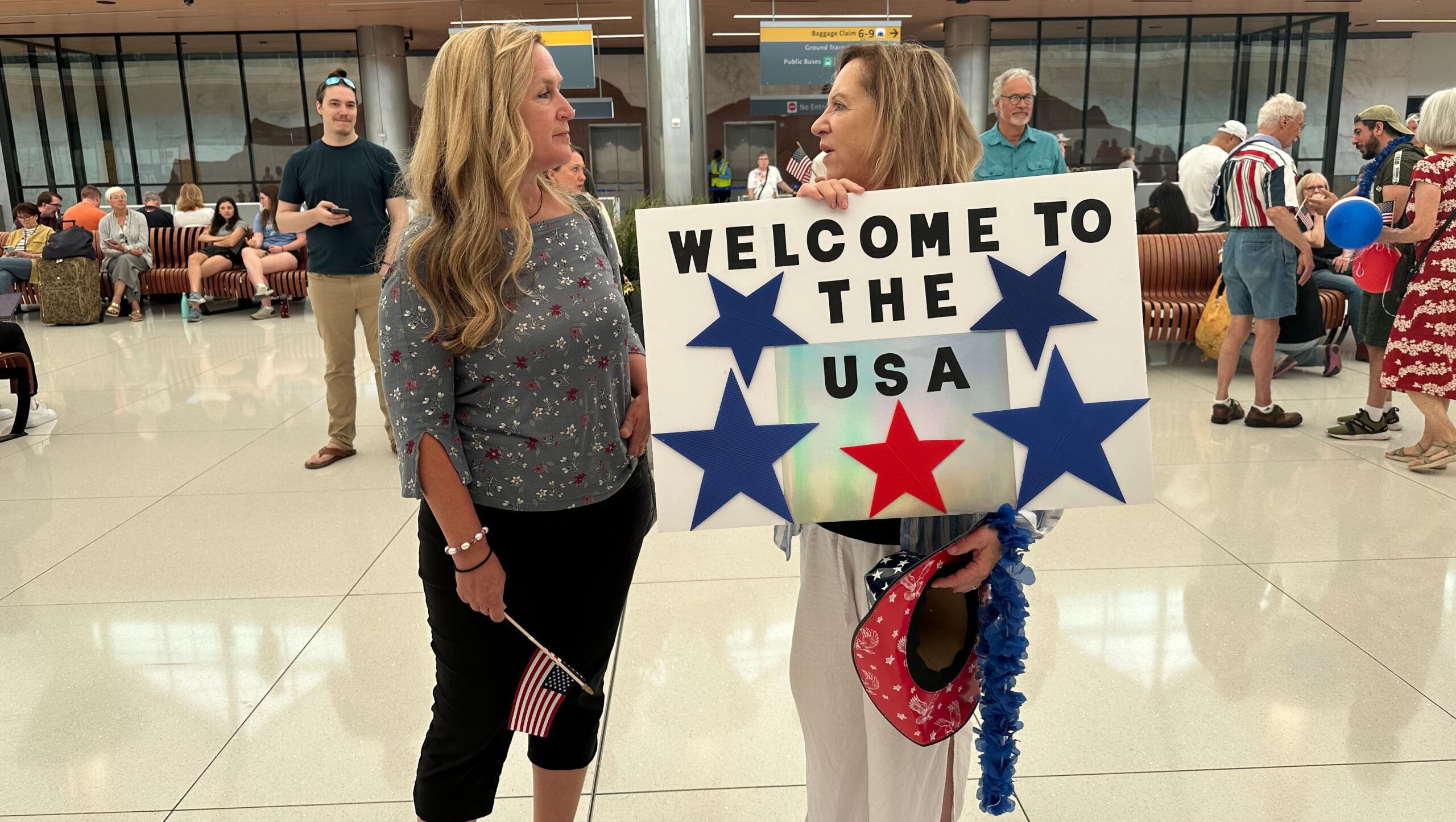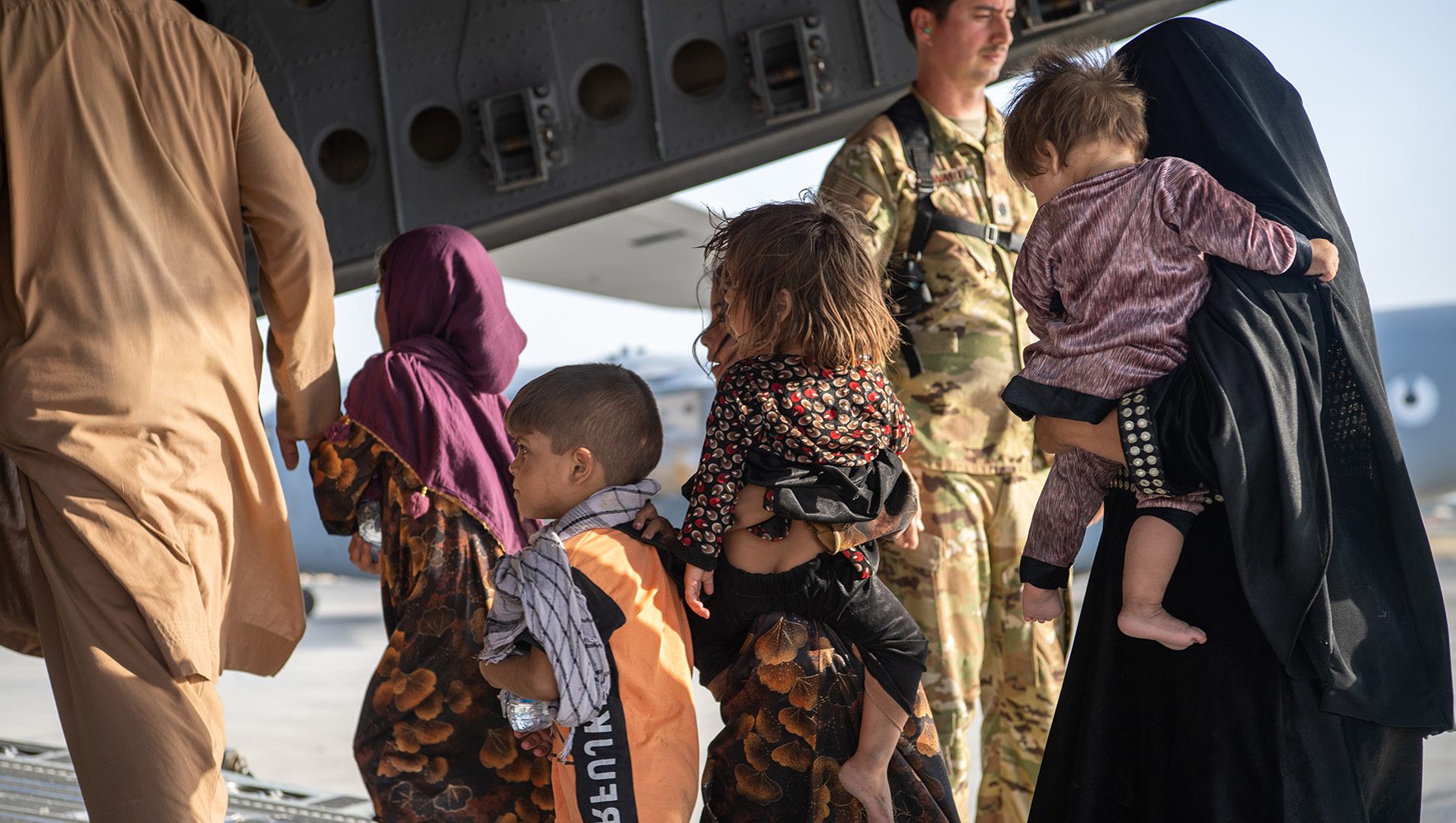The End of Title 42: Five Key Takeaways
By Ayelet Parness
HIAS.org
May 10, 2023

Immigrants seeking asylum in the United States wait in line as they are processed by U.S. Border Patrol agents in the early morning hours after crossing into Arizona from Mexico on May 10, 2023 in Yuma, Arizona. (Mario Tama/Getty Images)
The enforcement of Title 42, a public health measure invoked in 2020 to block people from seeking asylum at the U.S.-Mexico border, is set to end on 11:59 PM on Thursday, May 11, along with the end of the United States’ COVID-19 public health emergency declaration.
In preparation for the policy’s end, on April 27 the Biden Administration announced a package of policies that paired restrictions on the asylum process at the U.S.-Mexico border with commitments to facilitate and expand legal pathways, including resettlement, for displaced people from the Western Hemisphere.
Here are some key takeaways on what to expect following the end of Title 42, and what HIAS is doing to help:
The end of Title 42 does not mean that the border will be “open” after May 11.
Seeking asylum is a human right recognized by both U.S. and international law. But the process of seeking asylum in the United States is long and complex, and many who apply for asylum are denied.
Before Title 42 was put in place, asylum seekers at the U.S.-Mexico border were processed under Title 8 of the United States Code — which governs all immigration and asylum proceedings. Generally, this means that asylum seekers are placed into removal proceedings, during which they have to prove that they fled their home countries due to well-founded fears of persecution based on their race, religion, nationality, political opinion, and membership in a particular social group.
This system is complicated to navigate on one’s own, and asylum applications can be rejected for even small errors. Representation in immigration court is expensive, and nonprofits providing free or low cost assistance are overwhelmed with requests. Backlogs in the asylum system mean that an asylum seeker might wait years for their case to be adjudicated with no guarantee that their application will be successful.
Ending Title 42 does not mean that asylum seekers and other migrants will be allowed to enter and remain in the United States. It simply means that asylum seekers will be able to apply for asylum as they did before Title 42 was in place — but with new, significant restrictions that were not in place before Title 42 began.
Asylum seekers face new obstacles that were not in place prior to 2020.
On February 21, the Biden Administration proposed a series of policies which together, advocates claim, would result in a virtual asylum ban. Under this rule, an asylum seeker would only be eligible to seek asylum at the U.S.-Mexico border if they present themselves at a port of entry after making an appointment using the Department of Homeland Security’s mobile application, CBP One, or if they cross the border between ports of entry and can prove that they have sought and been denied asylum in a country through which they traveled on their way to the United States. The policy will go into effect on May 11 to coincide with the end of Title 42.
This is counter to both U.S. and international law: People have a right to seek asylum in the United States regardless of their manner of entry. The asylum ban risks sending people back to danger in the very countries from which they have fled, and does not take into account that the countries asylum seekers pass through on the way to the U.S. are often unsafe for them as well.
Related News
The Biden Administration’s “Asylum Ban,” Explained

As of April 10, the Biden Administration has also revived a policy aimed at quicker processing of noncitizens who do not have a visa or other legal way to enter the U.S. — a category which includes many asylum seekers. This is largely dependent on conducting expedited Credible Fear Interviews (CFIs), also called Credible Fear Screenings. During a CFI, an asylum seeker who has been placed in expedited removal proceedings must convince an asylum officer that they have a legitimate fear of persecution or torture if returned to their country of origin. If successful, they will be referred to U.S. Customs and Immigration Services (USCIS) to continue the asylum process. If not, they will be deported unless they are able to successfully appeal the decision.
Under this newly announced policy, these credible fear interviews are to take place in Customs and Border Protection (CBP) custody within 72 hours of the asylum seeker’s arrival in the U.S. — a process that has previously taken weeks. HIAS and other advocates are concerned that this dramatically shortened time frame will further reduce asylum seekers’ ability to secure legal counsel before their CFIs.
Additionally, asylum seekers are required to recount their experience immediately after what is often a traumatic journey to the U.S.-Mexico border, while facing the stress of being in CBP Custody — factors that USCIS recognizes can make CFIs extremely difficult for survivors of torture or other severe trauma.
Increased resettlement from the region is welcome news — but not a replacement for a functioning and fair asylum system.
Along with the announcement of these asylum restrictions, the Biden Administration announced several initiatives to welcome an increased number of displaced people from the region into the U.S. through the opening of Regional Processing Centers (RPCs) throughout Latin America, starting with Colombia and Guatemala. The administration committed to “welcoming thousands more refugees per month from the Western Hemisphere” with the goal of doubling the number of refugees the U.S. agreed to resettle during the Los Angeles Declaration on Migration and Protection. The goal of these RPCs is to allow people to make appointments to be evaluated for suitable legal pathways to enter the United States, Canada, and Spain.
The administration also announced that new family reunification humanitarian parole programs would be created for El Salvador, Guatemala, Honduras, and Colombia and that the expanded humanitarian parole processes that allow up to 30,000 people from Venezuela, Nicaragua, Cuba, and Haiti to receive temporary status in the U.S. each month will continue.
Together, these programs offer pathways for displaced people to seek safety in the U.S. without making the often treacherous journey to the U.S.-Mexico border. However, they do not help the thousands of people already there, nor do they replace the United States’ legal and moral obligation to provide asylum.
As Mark Hetfield, HIAS’ president and CEO, said in a statement about these announced changes, “we are encouraged that administration officials are working to increase resettlement and bring more refugees from around the Western Hemisphere to the United States — an expansion that HIAS has long called for. But while expanding resettlement is a good approach to promote safe passage and protection, it must not be treated as a rationale for restricting asylum.”
In Congress, efforts to extend Title 42 and further restrict asylum are being introduced.
On May 11, the House of Representatives is also expected to vote on H.R. 2, or the “Secure the Border Act of 2023.” The bill introduces a wide range of restrictions on asylum and immigration, including blocking people from seeking asylum if they arrive in the U.S. between ports of entry and reviving the “Migrant Protection Protocols (MPP)” program, also called “Remain in Mexico.” This program, which originated under the previous administration and ended in August 2022, required asylum seekers to await their asylum proceedings in Mexico, where they are often targeted with violence. President Biden has stated that he would veto this bill, though it is not expected to pass in the Senate.
“H.R. 2’s provisions are extreme to the point of absurdity,” said Naomi Steinberg, HIAS’ vice president for U.S. policy and advocacy in a statement. “Instead of seeking common-sense measures that would help to make the asylum system more efficient while also respecting the fundamental right to seek asylum, this bill seeks to obliterate very basic tenets of U.S. asylum law and harm people seeking safety in the process.”
Additionally, Senators Kyrsten Sinema (I-AZ) and Thom Tillis (R-NC) have introduced legislation that would effectively extend Title 42 for two years without being tied to a public health rationale.
Rapid changes to U.S. policy make it difficult for asylum seekers to access accurate, up-to-date information.
In the April 27 announcement, the Biden administration stated that it would combat misinformation about border policy by “broadcasting accurate information about U.S. migration laws and engaging with a wide spectrum of regional audiences to counter smuggler narratives.”
But with the number of policies changing at the U.S.-Mexico border all at once, misinformation remains a serious issue. Ill-intentioned smugglers aren’t the only ones to blame, either: Misinformation absorbed by friends and relatives ricochets across social media, as HIAS Mexico Managing Attorney Rocio Melendez Dominguez stated in a recent interview with NPR.
“We are seeing a lot of misinformation and rumors about — [for example], the border will be open after May 11,” said Melendez Dominguez. “Sometimes, it’s like they misunderstood some news, and people choose to believe in what sounds better, you know, in what gives them hope.”
A vital part of HIAS Mexico’s work involves ensuring asylum seekers have access to accurate, up-to-date information and know their rights. The team accomplishes this through “know your rights” workshops, informational videos and infographics posted to TikTok and other social media platforms, and street outreach.
As the end of Title 42 nears, combating misinformation remains a high priority. Staff at HIAS Mexico and across the Latin America and the Caribbean region are updating their informational resources and preparing their legal services, gender-based violence, and mental health and psychosocial services teams to respond to the increased need. In the United States, HIAS continues to advocate against these harmful policies that would negatively impact asylum seekers.





